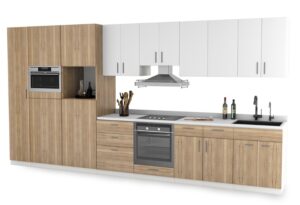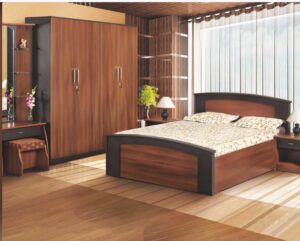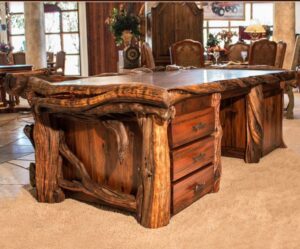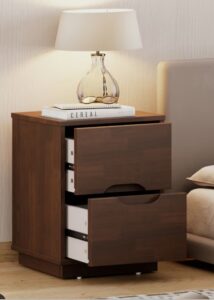Are you thinking about upgrading your child’s bed but feeling overwhelmed by the options available? Choosing the right kids bed furniture is an important decision that can impact your child’s comfort, safety, and overall well-being.
In this comprehensive guide, we will walk you through the essential factors to consider when selecting a kid’s bed, the different types of beds available, and how to involve your child in the decision-making process.
We’ll provide valuable tips for maintaining and cleaning kids’ beds to ensure they remain in top condition. Whether you’re a first-time parent or looking to upgrade your child’s sleeping arrangement, this guide has everything you need to make a well-informed decision. Let’s dive in and explore the world of kids’ beds together.
Key Takeaways:
Safety should be the top priority when choosing a kids bed, considering factors such as stability, guardrails, and materials used. Consider the size, space, and design of the bed to ensure it fits the room and your child’s needs. Storage and conversion options can also add functionality and longevity to the bed. Involving your child in the decision-making process can help them feel excited and invested in their new bed. Don’t forget to regularly clean and maintain the bed for its longevity and your child’s health.
Why is Choosing the Right Kids Bed Important?
Choosing the right kids bed furniture is crucial for creating a comfortable and safe sleeping environment that promotes healthy relaxation for children. It directly impacts their sleep quality, safety, and overall well-being, making it an essential decision for parents and caregivers.
When children sleep in a bed that meets their specific needs, they are more likely to experience restorative sleep, which is vital for their physical and cognitive development. The design and construction of the bed play a significant role in ensuring safety and helping to prevent accidents and injuries during sleep or playtime.
Selecting hypoallergenic fabric and mattresses helps to minimize the risk of allergic reactions and respiratory issues, providing a healthier sleeping environment for children.
What factors should be considered when choosing a children’s bed?
When selecting a children’s bed, several essential factors should be taken into consideration to ensure the optimal choice for the child’s easement, safety, and room aesthetics.
Safety
Safety is a paramount consideration when selecting a children’s bed, especially for younger children or those using bunk beds, requiring adherence to stringent safety standards and age-appropriate designs.
In terms of younger children, it’s crucial to focus on features like rounded edges, sturdy guardrails, and low-height frames to prevent falls and injuries. Additionally, bunk beds should comply with specific regulations to ensure the top bunk has adequate guardrails and a secure ladder.
When shopping for children’s beds, checking for safety certifications like ASTM, CPSC, and JPMA can ensure the product’s compliance with industry safety standards. Parents should also educate their children about safety measures, such as not jumping on the bed or playing near the ladder of bunk beds, to mitigate potential risks.
Size and Space
Considering the size and space available in the child’s room is crucial when choosing a children’s bed, ensuring it fits comfortably while allowing space for movement and potential sleepovers or activities.
Opting for a bed size that matches the room’s dimensions can optimize the space and create a cohesive layout. A bed with storage compartments or a trundle bed can provide additional functionality without occupying extra floor space.
With the right bed size, the room can accommodate play areas, study nooks, or even a small seating arrangement for friends, making the most of the available space while fostering a versatile and comfortable environment for children.
Material and Durability
The material and durability of the kid’s bed and mattress are crucial considerations, with a focus on high-quality, durable materials such as cotton and allergen-resistant fabric for long-term solace and reliability.
Selecting the right material for kids’ bedding can significantly impact their sleep quality and overall health.
High-quality cotton offers breathability and softness, while allergen-resistant fabric helps prevent allergies and other irritations. Durability is vital to withstand kids’ playfulness and ensure long-term use without compromising relief.
By choosing sturdy materials, you can ensure that the bed and mattress remain in good condition for an extended period, providing a safe and comfortable sleeping environment for your child.
Design and Theme
The design and theme of the kids bed furniture play a significant role in creating a personalized and appealing sleeping space for children, offering diverse styles and options to match their preferences and room decor.
When selecting a kid’s bed, it’s essential to consider the variety of styles available. From whimsical and colorful designs to more subtle and classic options, numerous choices can perfectly complement a child’s personality and interests. Coordinating the bed’s theme with other elements in the room, such as wall art, rugs, and curtains, can create a cohesive and visually engaging space.
Integrating matching duvet covers and pillowcases that align with the bed’s theme can enhance the overall look and feel of the room. Whether it’s a favorite cartoon character or a nature-inspired motif, these bedding elements can add an extra layer of charm and comfort to the sleeping area.
Storage Options
Considering storage options when choosing a children’s bed can enhance room organization and relief, providing convenient solutions for bedding, toys, or personal items while optimizing space utilization.
By integrating storage options such as built-in drawers, shelves, or ottoman beds, parents can create a coherent and functional environment for their children. This not only streamlines the organization of toys and clothes but also eliminates clutter, making it easier for kids to keep their rooms tidy.
These storage solutions promote a sense of responsibility and independence in children as they learn to manage and take care of their belongings.
Cost and Budget
Evaluating the cost and budget considerations is essential when choosing a kid’s bed, ensuring a balance between quality, materials, and frame construction within the allocated budget.
When considering the cost of a kid’s bed, it’s important to factor in the affordability of the materials used. Whilst wood and metal frames may offer durability, they can also come with a higher price tag. Opting for budget-friendly materials like MDF or particle board can help keep costs in check without compromising on quality.
Conversion Options
Considering conversion options for kids’ beds, such as convertible bunk beds or adaptable designs, offers versatile solutions that can grow with the child’s needs and preferences.
The design flexibility allows for easy transformation from a single bed to a bunk bed, maximizing space without compromising on style or safety. Parents can also opt for adjustable configurations to accommodate siblings or sleepovers, fostering a sense of independence and creativity in their children’s rooms.
These bunk bed functionalities promote a playful and resourceful environment, granting more room for recreational activities and storage, adapting to the evolving interests of the child.
What are the Different Types of Kids Beds?
A diverse range of children’s beds is available, including:
- Standard single beds
- Versatile bunk beds
- Convenient trundle beds
- Elegant four-poster beds
- Other unique options, catering to diverse preferences and space requirements
Standard Twin Bed
Standard twin beds are a popular choice for children, offering versatile design options and mattress sizes that cater to children’s easement and room dimensions, making them a practical and adaptable choice.
Parents often choose standard twin beds due to their space-saving attributes, as they are ideal for:
- solo sleepers
- shared rooms
- bunk bed configurations
- trundle bed setups
The standard twin mattress dimensions of 38” x 75” make it effortless for parents to find the perfect mattress while offering children ample room for comfortable sleep. With various mattress options, such as memory foam, innerspring, and hybrid, parents can tailor the sleeping surface to their child’s preferences and support needs.
Loft Bed
Attic beds are an innovative space-saving solution that maximizes room space and offers versatile storage or study options, providing an efficient and functional bed choice for children’s rooms.
The design features of attic beds are tailored to optimize spatial efficiency while offering a range of storage options. Incorporating shelves, drawers, and built-in desks, these beds make the most of the available space, keeping the room organized and clutter-free.
Their elevated design also creates space underneath, perfect for creating a cozy reading nook or a play area. The versatility in design allows for customization based on individual needs, with options for bunk beds, low lofts, or traditional lofts to suit different room layouts.
Bunk Bed
Bunk beds offer a practical space-saving solution, accommodating multiple children or providing conversion options, with a focus on safety standards and space efficiency for versatile room layouts.
They are designed to maximize usable space, making them ideal for smaller areas or shared bedrooms. Bunk beds often come with built-in storage solutions, such as drawers or shelving, further optimizing the room’s layout. You may even consider customizing a bunk bed for your kids bedroom furniture that accommodates your children in one room if you’re facing space constraints.
Safety considerations are paramount, with sturdy construction and guardrails ensuring a secure sleeping environment for the kids.
Trundle Bed
Trundle beds offer convenient sleepover solutions and space-saving benefits, providing an additional sleeping space that can be neatly tucked away when not in use, enhancing room versatility and functionality.
These versatile beds are particularly popular in children’s rooms, where they serve as an excellent option for accommodating friends or siblings during sleepovers. The clever design allows for a pull-out bed that can be seamlessly stowed underneath the main bed frame.
With this setup, the room can easily be transformed for different uses, from a play area during the day to a comfortable sleeping space at night. The compact nature of trundle beds makes them an ideal choice for rooms with limited space, helping to maximize every inch of available area and maintain a clutter-free environment.
Daybed
Daybeds offer versatility and comfort, serving as both a seating and sleeping area, with elegant design options and functional features that complement various room aesthetics and preferences.
With a children’s daybed, the versatility is further exemplified as it seamlessly transforms a child’s room into a cozy reading nook during the day and provides a comfortable sleeping space at night. The multifunctional design of daybeds allows for utilization in smaller living spaces, making them a practical choice for urban apartments or compact bedrooms.
Their design versatility makes them a timeless addition to any decor scheme, whether it’s modern, rustic, or traditional, providing an elegant touch to the room.
Canopy Bed
Canopy beds exude elegance and charm, offering a luxurious sleeping experience and enhancing the room’s aesthetic appeal, with diverse design options that cater to varied thematic preferences.
From whimsical fairy-tale motifs to sophisticated modern designs, children’s canopy beds bring enchanting thematic coordination to any bedroom. The delicate drapery and intricate detailing of these beds amplify the feeling of luxury and create a dreamy, magical atmosphere.
The elegance and design appeal of canopy beds provide the perfect canvas for personalization, allowing for seamless integration with existing decor or the creation of an entirely new aesthetic.
Novelty Bed
Novelty beds spark creativity and imagination, featuring unique designs such as car-shaped frames or themed structures that create an engaging and comfortable sleeping space for children, fostering a sense of fun and individuality.
These innovative designs cater to children’s interests and provide an outlet for their imagination to flourish. Whether it’s a princess castle bed with a slide and hidden play areas or a space-themed bunk bed with built-in study nooks, the possibilities are endless.
These thematic engagements not only serve as a cozy retreat for sleep but also as an interactive and imaginative play space. The personalized relief features like built-in shelves for books and toys, or customizable color schemes, add a touch of individuality, making the sleeping experience even more special.
How to involve your child in choosing their bed?
Involving your child in the process of choosing their bed can enable them to express their preferences and easement needs, creating a sense of ownership and excitement about their new sleeping space.
When considering age-appropriate involvement, younger kids may enjoy selecting a bed with fun themes or characters, fostering their imagination, and creating a space where they feel comfortable and secure.
For older children, discussing the bed’s relief features such as mattress firmness and size can help in optimizing their sleep and promoting adequate rest.
Encouraging them to be part of choosing bedding, pillows, and decorations will enable them to personalize their sleep environment and take pride in their space.
Tips for Maintaining and Cleaning Kids Beds
Effective maintenance and regular cleaning of children’s beds are essential to ensure hygiene, allergen control, and longevity, particularly for children with allergies or asthma, promoting a healthy sleeping environment.
Parents can start with a simple routine of regularly vacuuming the mattress and washing the bed linen in hot water to eliminate dust mites and allergens. Additionally, using mattress protectors can safeguard the bed from spills, bedwetting accidents, and dust accumulation.
It’s also wise to rotate and turn the mattress periodically to maintain its shape and support. When dealing with asthma, opting for hypoallergenic bed linens and pillows can further minimize triggers and ensure restful sleep.
Frequently Asked Questions
What factors should I consider when choosing the right kids bed?
There are several important factors to consider when choosing the right kids bed furniture. These include the child’s age, size, sleeping habits, and personal preferences. Other important factors may include the bed’s size, safety features, durability, and the overall aesthetic of the room.
Are there different types of kids beds available?
Yes, there are several types of kids’ beds available, including standard twin or full-size beds, bunk beds, loft beds, trundle beds, and themed beds.
Each type of bed offers its unique benefits and may be more suitable for different ages or sleeping arrangements. To explore more types and customization in kids bed furniture, visit 44 Wood right away.
How can I ensure the bed is safe for my child?
When choosing a kids bed, it is important to prioritize safety. Look for beds with sturdy construction, rounded edges, and smooth surfaces. Check for any safety certifications or standards that the bed may meet. You can also add additional safety features such as bed rails or guardrails for added security.
What should I look for in terms of durability?
Durability is an important factor when choosing a kids bed. Look for beds made from high-quality materials such as solid wood or metal. It is also important to consider the weight limit of the bed and how well it can withstand daily wear and tear.
How do I know if the bed will fit in my child’s room?
Before purchasing a kids bed, be sure to measure the space in your child’s room to ensure that the bed will fit comfortably. Consider the layout of the room and how the bed will fit with other furniture and decor. It may also be helpful to look for space-saving options such as bunk beds or loft beds.
What are some tips for involving my child in the bed-choosing process?
Involving your child in the bed-choosing process can help them feel more excited and invested in their new bed. You can allow them to pick out a bed in their favorite color or design, or involve them in the decision-making process by presenting them with a few options to choose from.
It is important to also consider their preferences and needs when making the final decision.









